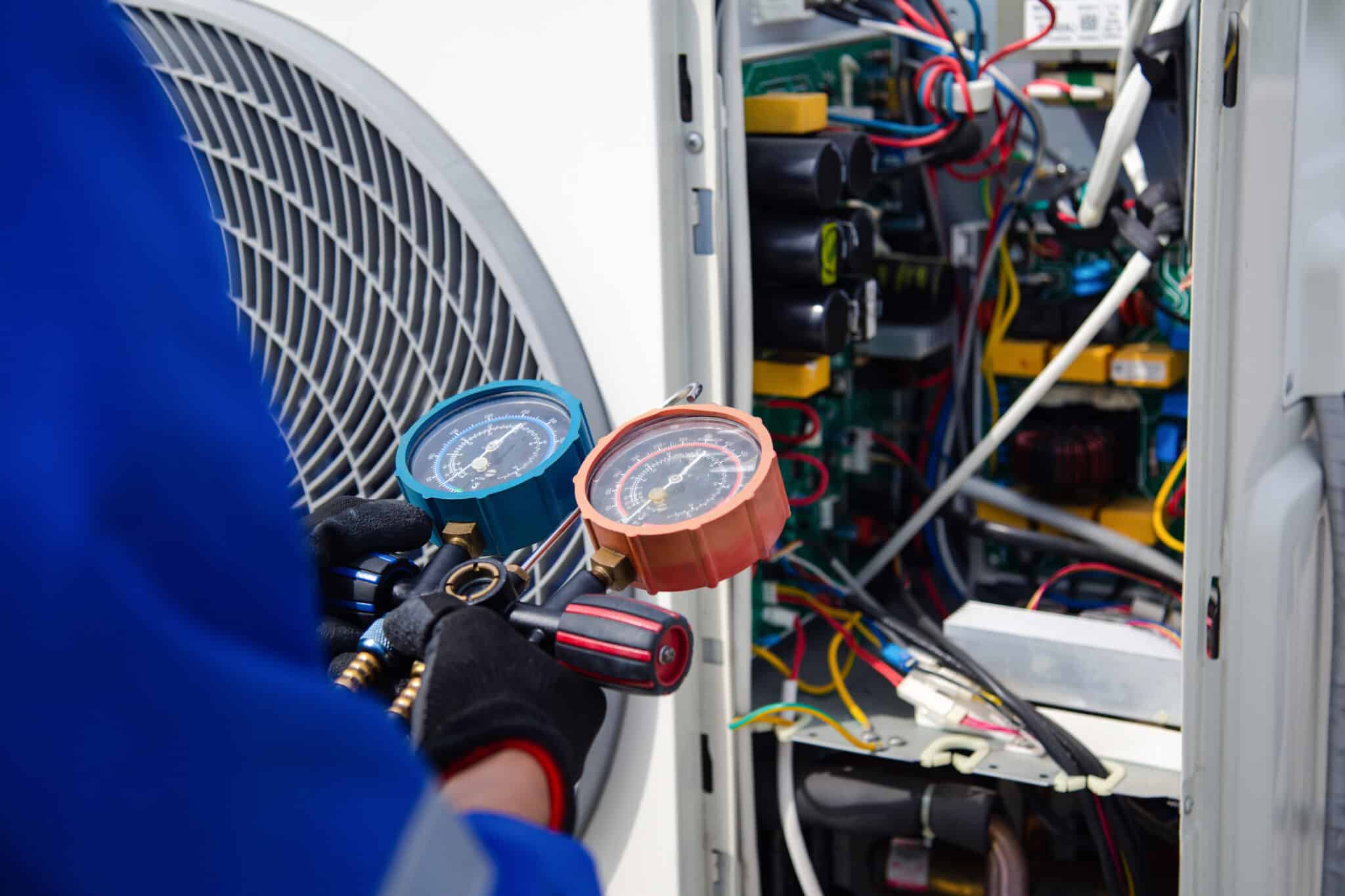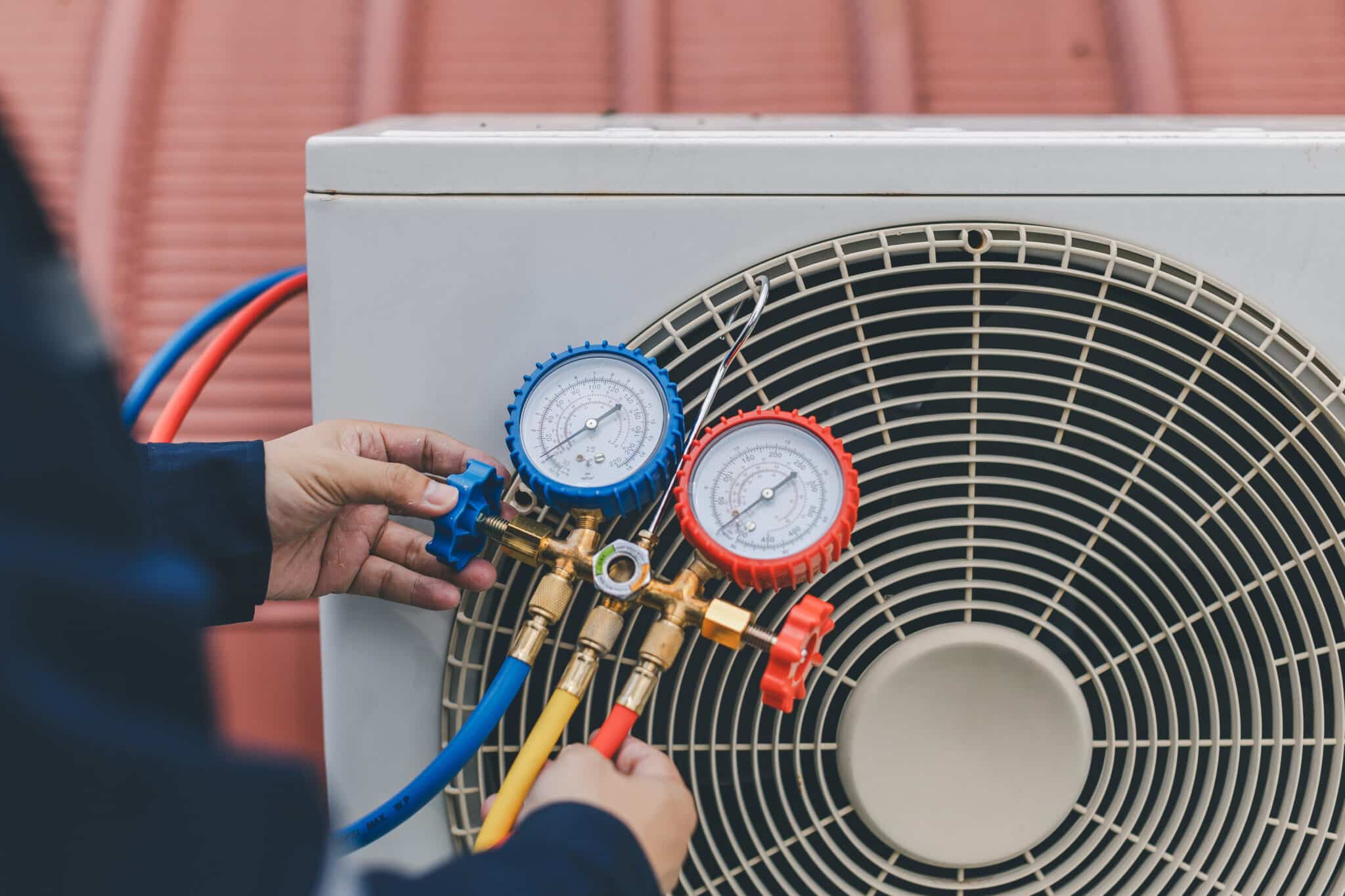When winter arrives, your HVAC maintenance routine becomes more important than ever. Cold temperatures put extra strain on heating systems, making regular upkeep essential for efficiency, comfort, and safety. Neglecting maintenance can lead to unexpected breakdowns, higher energy bills, and even safety hazards like carbon monoxide leaks.
Proper HVAC maintenance ensures your system runs smoothly throughout the colder months. It helps improve indoor air quality, keeps energy costs in check, and extends the lifespan of your heating unit. Whether you use a furnace, heat pump, or another heating system, a well-maintained unit will provide reliable warmth when you need it most.
At Pro Heating and Air, we understand the challenges of keeping homes warm in winter, especially in areas like Azle, TX, where temperatures can fluctuate. That’s why we’ve put together this Ultimate 2025 Guide to HVAC Maintenance in Cold Weather. This guide will cover essential maintenance tasks, common winter HVAC issues, and expert tips to help you stay comfortable all season long.
Let’s dive in and explore why HVAC maintenance is crucial for cold weather, how you can optimize your system’s performance, and when to call in the professionals for assistance.
Why Winter HVAC Maintenance is Essential
Winter places a heavy demand on heating systems, making HVAC maintenance a crucial step in ensuring reliable performance. Without proper upkeep, your system may struggle to keep your home warm, leading to discomfort, increased energy consumption, and potential costly repairs.
Regular HVAC maintenance helps prevent unexpected breakdowns when temperatures drop. A well-maintained heating system runs more efficiently, reducing strain on components and lowering the risk of sudden failures. This is especially important in areas like Azle, TX, where winter nights can be chilly, and a malfunctioning unit can quickly become a major inconvenience.
Another key benefit of routine maintenance is improved energy efficiency. A heating system that operates at peak performance uses less energy to produce the same level of warmth. This means lower heating costs and a reduced carbon footprint. Dirty filters, clogged ducts, and worn-out components force your HVAC system to work harder, leading to wasted energy and higher utility bills.
Lastly, regular servicing extends the lifespan of your HVAC system. Heating units that receive proper care can last several years longer than neglected systems. Professional inspections help identify minor issues before they become major problems, allowing you to make necessary repairs before they impact performance.
Investing in HVAC maintenance is the best way to stay warm and comfortable throughout winter while avoiding unnecessary stress and expenses. In the next section, we’ll explore one of the most important maintenance tasks, checking and replacing air filters.

Checking & Replacing Air Filters
One of the simplest yet most effective HVAC maintenance tasks is checking and replacing air filters. Clean filters ensure proper airflow, improve indoor air quality, and help your heating system run efficiently. Dirty or clogged filters restrict airflow, making your HVAC system work harder to distribute warm air throughout your home.
During winter, air filters can accumulate dust, pet dander, and other airborne particles more quickly due to increased indoor activity. Experts recommend checking your filters at least once a month and replacing them every 30 to 90 days, depending on the filter type and household conditions. Homes with pets, allergies, or heavy HVAC use may need more frequent replacements.
A clean air filter also contributes to lower energy costs. When airflow is restricted, the system consumes more energy to push air through, leading to higher utility bills. By keeping the filter clean, you reduce energy waste and maintain optimal heating efficiency.
In addition to energy savings, replacing air filters helps protect your HVAC system from unnecessary strain. A clogged filter can lead to overheating, short cycling, and even system malfunctions. Regular filter maintenance extends the lifespan of your heating unit and reduces the likelihood of costly repairs.
Making air filter checks part of your HVAC maintenance routine is a simple yet powerful way to ensure warm, clean air all winter. Next, we’ll discuss another key factor in heating efficiency, inspecting and sealing ductwork.
Inspecting and Sealing Ductwork
Leaky or damaged ductwork can significantly impact your HVAC maintenance efforts by allowing warm air to escape before it reaches your living spaces. This forces your heating system to work harder, leading to higher energy bills and uneven heating throughout your home. Regular duct inspection and sealing help maximize efficiency and comfort during the winter months.
One of the most common signs of duct leaks is inconsistent room temperatures. If some areas in your home feel colder than others despite the thermostat setting, your ductwork may have gaps, cracks, or loose connections. Higher-than-usual energy bills and excessive dust buildup are also indicators of duct leaks.
Inspecting your ductwork for visible damage is a great first step. Look for disconnected sections, holes, or any signs of wear. While minor leaks can sometimes be sealed with specialized duct sealant, professional duct sealing is often recommended for long-term efficiency and durability. An HVAC technician can perform a thorough inspection, locate hidden leaks, and ensure your system is operating at peak performance.
Properly sealed ductwork not only improves heating efficiency but also enhances indoor air quality. Leaks can allow dust, allergens, and contaminants to enter your HVAC system, which then circulates throughout your home. By addressing duct issues as part of your HVAC maintenance routine, you create a healthier, more comfortable living environment.
Thermostat Optimization for Cold Weather
Proper thermostat settings play a crucial role in HVAC maintenance during winter. Adjusting your thermostat correctly helps maintain comfort while reducing energy waste. Many homeowners unknowingly set their thermostats too high, forcing their heating systems to work harder than necessary. Optimizing your settings can prevent overuse and lower heating costs.
For the best balance between warmth and efficiency, the U.S. Department of Energy recommends setting your thermostat to 68°F (20°C) while you’re home and awake. When you’re asleep or away, lowering it by 7-10 degrees can result in significant energy savings. A programmable or smart thermostat makes this process effortless by automatically adjusting the temperature based on your schedule.
Smart thermostats provide additional benefits by learning your heating preferences and making real-time adjustments. They can be controlled remotely, allowing you to change settings from your phone or tablet. Some models even track energy usage and offer suggestions to improve efficiency. Upgrading to a smart thermostat is a great way to enhance your HVAC maintenance strategy.
In addition to adjusting settings, ensure your thermostat is installed in an optimal location. It should be placed away from direct sunlight, vents, and drafts, as these factors can cause false temperature readings. If your system seems to struggle despite proper thermostat use, it may indicate an issue with the heating unit itself.
By optimizing your thermostat, you can maintain a warm home without overworking your HVAC system. In the next section, we’ll discuss the importance of checking your furnace and heat pump for winter readiness.
Checking the Furnace & Heat Pump
Your furnace or heat pump is the heart of your home’s heating system, making its upkeep a vital part of HVAC maintenance. A malfunctioning unit can lead to inconsistent heating, higher energy bills, or even complete system failure during the coldest months. Regular inspections help identify potential issues before they turn into costly repairs.
One of the first signs of a struggling furnace is weak or uneven airflow. If some rooms feel colder than others, it could indicate a clogged filter, a failing blower motor, or ductwork issues. Additionally, unusual noises, such as banging, rattling, or whistling, may signal loose components or mechanical wear. If you notice these problems, scheduling a professional inspection is recommended.
Heat pumps require special attention during winter since they operate differently from traditional furnaces. If your heat pump runs constantly or fails to provide sufficient warmth, it may have a defrosting issue or low refrigerant levels. Keeping the outdoor unit free of snow and ice ensures proper airflow and prevents performance problems.
Routine maintenance, including cleaning burners, inspecting the heat exchanger, and checking for carbon monoxide leaks, is essential for safety. A professional HVAC technician can perform a thorough inspection to ensure your system is operating safely and efficiently.
By keeping your furnace or heat pump in top condition, you can enjoy consistent warmth throughout winter. Next, we’ll discuss the importance of keeping vents and outdoor units clear for optimal performance.
Keeping Vents & Outdoor Units Clear
Proper airflow is a key component of HVAC maintenance, especially during winter. Blocked vents and obstructed outdoor units can reduce heating efficiency, increase energy consumption, and strain your HVAC system. Ensuring clear airflow helps maintain consistent indoor temperatures and prevents unnecessary wear on your heating equipment.
Indoor vents should remain unobstructed by furniture, curtains, or rugs. When vents are blocked, warm air cannot circulate properly, leading to uneven heating throughout your home. Regularly dusting and vacuuming vents also helps prevent dust buildup, which can restrict airflow and lower indoor air quality.
For homes with heat pumps, keeping the outdoor unit clear of snow, ice, and debris is essential. Snow accumulation around the unit can cause airflow restrictions, forcing the system to work harder. Ice buildup on the coils can also interfere with proper heat exchange, leading to efficiency issues. Gently removing snow and ensuring at least two feet of clearance around the unit allows it to operate efficiently.
Blocked exhaust vents from furnaces or boilers can create serious safety hazards. A clogged vent can lead to improper ventilation and even carbon monoxide buildup inside the home. Inspecting and clearing these vents regularly ensures safe operation throughout winter.
By keeping vents and outdoor units clear, you help your HVAC system perform at its best. In the next section, we’ll discuss the benefits of scheduling a professional HVAC tune-up to prepare for winter.
Scheduling a Professional HVAC Tune-Up
One of the most effective ways to ensure your heating system runs smoothly all winter is by scheduling a professional HVAC maintenance tune-up. Regular service helps prevent unexpected breakdowns, improves efficiency, and extends the lifespan of your equipment. An annual inspection ensures that your system is ready to handle the demands of cold weather.
During a professional tune-up, an HVAC technician will inspect and clean critical components, including the heat exchanger, blower motor, and burners. They will also check for gas leaks, test the thermostat’s accuracy, and ensure the system is operating safely. Catching minor issues early can prevent costly repairs or complete system failures when temperatures drop.
Another key benefit of professional maintenance is improved energy efficiency. A well-tuned system requires less energy to heat your home, leading to lower utility bills. Technicians will also check for airflow restrictions, duct leaks, and dirty filters that could reduce performance.
Scheduling service before peak winter months ensures that your heating system is in top condition when you need it most. HVAC companies often have increased demand during the coldest months, so planning ahead allows you to avoid long wait times and emergency repair costs.
By investing in a professional HVAC maintenance tune-up, you can enjoy peace of mind knowing your system is prepared for winter. In the next section, we’ll cover common cold-weather HVAC problems and how to address them.
Common Cold-Weather HVAC Problems & Solutions
Even with regular HVAC maintenance, heating systems can face issues during extreme cold. Recognizing common problems and knowing how to address them can help prevent discomfort and costly repairs. Here are a few of the most frequent winter HVAC issues and their solutions.
1. Frozen Pipes or Coils
When temperatures drop too low, condensation on pipes and coils can freeze, restricting airflow and reducing heating efficiency. To prevent this, keep your home at a consistent temperature and ensure proper insulation around exposed pipes. If freezing occurs, turn off the unit and allow it to thaw before restarting.
2. Uneven Heating in Different Rooms
If certain areas of your home feel colder than others, it could be due to blocked vents, duct leaks, or improper thermostat placement. Uneven heating can strain your HVAC system, forcing it to work harder and reducing overall efficiency. Ensure all vents are open and free from obstructions, such as furniture or curtains, to allow proper airflow throughout the home. If the problem persists, have a professional inspect your ductwork for leaks or insulation issues as part of routine HVAC maintenance.
3. Furnace Blowing Cold Air
A furnace that blows cold air may have a dirty filter, a malfunctioning thermostat, or an issue with the pilot light or ignition system. A clogged air filter restricts airflow, making it harder for your HVAC system to maintain warm temperatures. Replacing the air filter, checking the thermostat settings, and ensuring proper fuel supply can often resolve this issue. If the pilot light is out or you suspect an ignition problem, contact a professional for HVAC maintenance to avoid further complications.
4. Short Cycling (Frequent On/Off Cycling)
Short cycling happens when a system turns on and off too frequently, often due to an overheating issue, a malfunctioning thermostat, or an improperly sized unit. This rapid cycling can put excessive strain on your HVAC system, leading to increased energy costs and potential system damage. Checking for dirty air filters, blocked vents, and thermostat malfunctions can help resolve minor short cycling issues. However, if the problem persists, scheduling professional HVAC maintenance is the best way to diagnose and fix the root cause.
5. Strange Noises or Odors
Loud banging, rattling, or grinding sounds can indicate loose components, while burning or musty odors may signal a clogged filter or electrical issue. If unusual noises or smells persist, shut off the system and seek professional help to avoid further damage.

FAQ: Common Questions About HVAC Maintenance in Winter
1. How often should I schedule HVAC maintenance?
It’s recommended to schedule HVAC maintenance at least once a year, ideally before winter begins. Regular servicing helps identify potential issues before they turn into costly repairs. A professional inspection includes checking filters, ductwork, and heating components to ensure optimal performance.
2. Can I perform HVAC maintenance myself?
Homeowners can handle simple tasks like replacing air filters and keeping vents clear of dust and debris. However, professional servicing is necessary to inspect internal components, clean critical parts, and ensure safe operation. An HVAC technician can detect issues such as gas leaks, failing motors, or thermostat malfunctions that may not be visible to the untrained eye.
3. What temperature should my thermostat be in winter?
For energy efficiency and comfort, set your thermostat to 68°F (20°C) while at home and lower it by 7-10 degrees when sleeping or away. This temperature range helps reduce strain on your heating system while keeping your home comfortable. Smart thermostats can automate these adjustments based on your schedule and preferences.
4. Why is my furnace blowing cold air?
A furnace blowing cold air could indicate a dirty filter, a faulty thermostat, or ignition system issues. Restricted airflow caused by a clogged filter can prevent warm air from circulating properly. If the pilot light or electronic ignition is malfunctioning, the furnace may fail to produce heat.
5. How do I know if my HVAC system is energy efficient?
An energy-efficient HVAC system maintains consistent heating without excessive energy consumption. High utility bills, frequent cycling, and uneven heating can indicate that your system is not operating efficiently. Upgrading to a high-efficiency furnace, sealing ductwork, and using programmable thermostats can help improve performance.








